
|
|
Chihuahua
Mexico
The Chihuahua, the smallest dog in the world, is named after
the Mexican state of Chihuahua, where its type probably
originated at least 9,000 years ago.
|
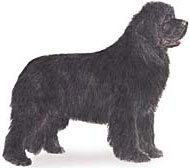
|
|
Newfoundland
Canada
The Newfoundland, a gentle giant of a dog, arose in the rugged
conditions of eastern Canada, where it is known as a champion
work and rescue dog. In 1919, a Newfoundland famously pulled
20 shipwrecked sailors to safety in a lifeboat.
|

|
|
Saluki
Yemen
The saluki is thought to take its name from the ancient city
of Saluk in Yemen, where its early ancestors probably
originated. Prized for its speed, this breed type once roamed
a wide swath of the Arabian Peninsula and northern Africa.
|

|
|
Dogo Argentino
Argentina
The Dogo Argentino, or Argentine mastiff, is a cross between
big dogs like the great dane, and fighting dogs like bulldogs.
An Argentinean doctor and his brother, wanting to breed the
perfect dog for their country's hunting and sporting
traditions, developed the Dogo Argentino in the 1920s. This
breed is a good example of the continuing evolution of dog
breeds worldwide.
|
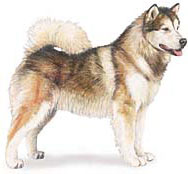
|
|
Alaskan Malamute
Alaska
This is the Alaskan malamute, an arctic sled dog named after
the Mahlemut tribe of the breed's native Kotzebue Sound in
northwestern Alaska. Bone and ivory carvings dated to 20,000
years ago show ancient malamutes almost identical to today's
breed.
|
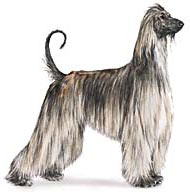
|
|
Afghan Hound
Afghanistan
The Afghan hound is an ancient breed whose modern relatives
arose in Afghanistan. The breed's earliest ancestors probably
lived in Iran and Egypt as well. This dog has an unusual body
shape, which it gets from uniquely wide hipbones that allow it
to swiftly traverse Afghanistan's uneven, rocky terrain.
|
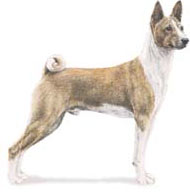
|
|
Basenji
Democratic Republic of the Congo
The basenji is a central African dog native to the Congo
region. This breed does not bark but rather makes yodel-like
noises. The modern basenji's ancestors were probably pariah
dogs, meaning they were domesticated dogs that interbred with
wolves and jackals and lived in packs on the outskirts of
villages, a behavior still common among non-domesticated
African basenjis.
|
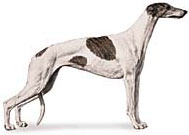
|
|
Greyhound
Egypt
Since the Egyptian Fourth Dynasty (circa 2575-2467 B.C.) and
likely before, the greyhound has been known as a graceful and
speedy animal, perhaps the fastest dog on Earth.
|
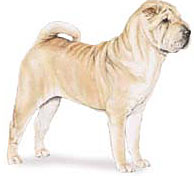
|
|
Shar-Pei
China
The shar-pei, which translates to "rough, sandy coat," is a
unique-looking breed native to the small village of Tai Li in
China's Kwantung Province. The breed has existed in the
southern provinces of China since at least the beginning of
the Han Dynasty (c. 200 B.C.).
|
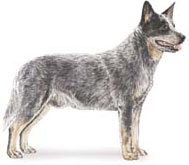
|
|
Australian Cattle Dog
Australia
The Australian cattle dog is an outback breed tracing back to
the now-extinct black bobtail, an Australian herder that was
slow and clumsy. It was bred with the more agile,
sheepdog-like Australian kelpie, the dalmatian, the
Smithfield, and the dingo, among others, to hone its ideal
shepherding skills.
|
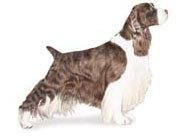
|
|
English Springer Spaniel
England
The English springer spaniel, a beloved pet and hunting dog,
was bred to "spring" from cover and rouse prey so that the
spaniels' masters could strike. "Springing spaniels" are in an
ancient category of dogs that probably originated in Spain,
but the earliest such breeds are now extinct.
|
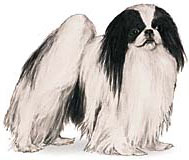
|
|
Japanese Chin
Japan
The Japanese Chin, with its flat face, probably shares a
common ancestor with other similar regional dogs, including
the Pekingese and the pug. These dogs were once so revered
that they commanded their own staffs of servants in the
Japanese court, who, among other things, would fan them in hot
weather.
|
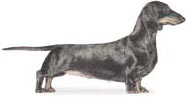
|
|
Dachshund
Germany
In its native Germany, "dachshund" means "badger dog." The
modern dachshund derives from the oldest breeds of German
hunting dogs and, like its ancestors, is a fearless and fierce
badger hunter despite its small stature.
|

|
|
Borzoi
Russia
The borzoi has been known in Russia since at least the 17th
century, when it was the favored breed of the Czar. It
probably originated from a cross between a greyhound-type dog
and a wolfhound. The result was a dog that was made for speed
(with its aerodynamic face) and well suited to cold weather
(with its full coat).
|

